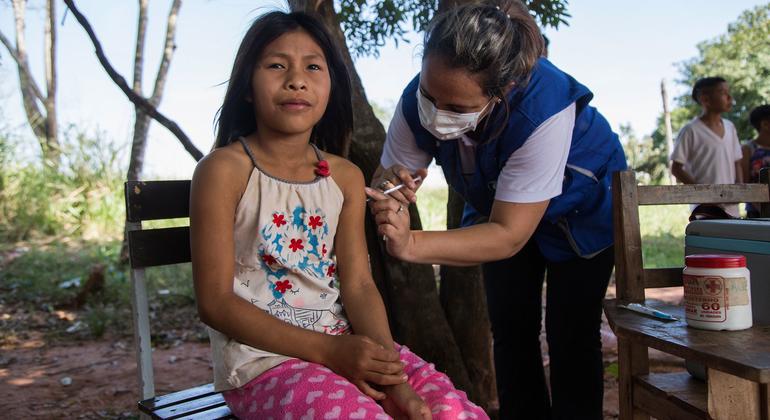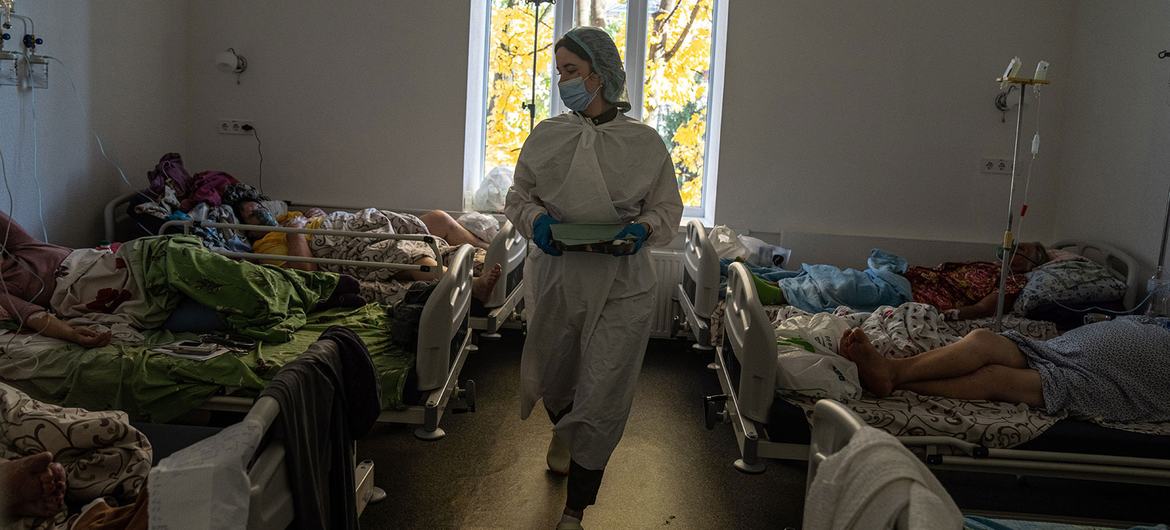
The WHO on Friday announced the end of COVID-19 as a global health emergency. It was first declared in a clarion call from the agency on 30 January 2020. The deadly virus which has killed nearly seven million people, first appeared in the Chinese city of Wuhan in December 2019, with tens of thousands of cases reported in the following month. The virus became officially known as COVID-19, on 3 February as the new strain spread to 24 other countries. By 2022, vaccines had been developed and were widely available, like at this mobile clinic in Paraguay.

In mid-March 2020, WHO upgraded COVID-19 to a global pandemic, and the world shut down. Children could not go to school, like this young student tuning into classes over the radio, broadcast across Ethiopia. Air travel halted. Workplaces shuttered. Lockdowns emptied streets. Healthcare workers became heroes. As did scientists working collaboratively to seek answers and solutions. Digital innovators in healthcare, schools, humanitarian agencies, the UN, and essential workplaces worldwide, introduced billions to a new virtual world.

“Business as usual” was turned on its head. UN Secretary-General António Guterres held virtual meetings, as the Organization and its agencies’ leadership and staff harnessed their unique convening power to tackle the pandemic.

Multilateralism was put to the test, as industries and multiple sectors coordinated how best to respond to a public health emergency not seen in a century. Like in most cities, the pandemic severely strained healthcare systems to their limits in New York, home to UN Headquarters.

The world had to get used to a “new normal”. Lockdown saw a virtual world of social media platforms flourish, but mis- and disinformation spread as quickly as the virus itself. In much of the world, empathy and kindness also spread, as neighbours helped each other cope with mental health issues, loneliness, and loss. The global economy froze. The UN General Assembly moved online, where its 193 Member States met to chart a path out of the deadly pandemic, but the gap between the haves and have-nots, also widened.

The pandemic reversed decades of development gains and widened inequalities. Calls against vaccine “apartheid” demanded access for all. In India, a door-to-door campaign in a village in Rajasthan provided this elderly woman with a second dose of the COVID-19 vaccine. Other vulnerable groups who had suffered disproportionately pre-pandemic faced exclusion and increased violence. Hard-won gains towards achieving the 2030 Agenda for Sustainable Development dissolved, but initiatives like the UN Secretary-General’s vision for global cooperation, Our Common Agenda, offered potential solutions.

This 76-year-old man was proud to show his vaccination card in 2021 after receiving a COVID-19 vaccine in Kasoa, Ghana. Meanwhile, COVID-19 continues to infect and re-infect millions, and is still a deadly disease with the potential to surge and mutate fast. WHO has updated its Global Response Plan to support countries transition to longer-term prevention, control, and management. WHO declared an end to the global public health emergency on 3 May at a time when the world is gingerly stepping towards “business as usual”.

